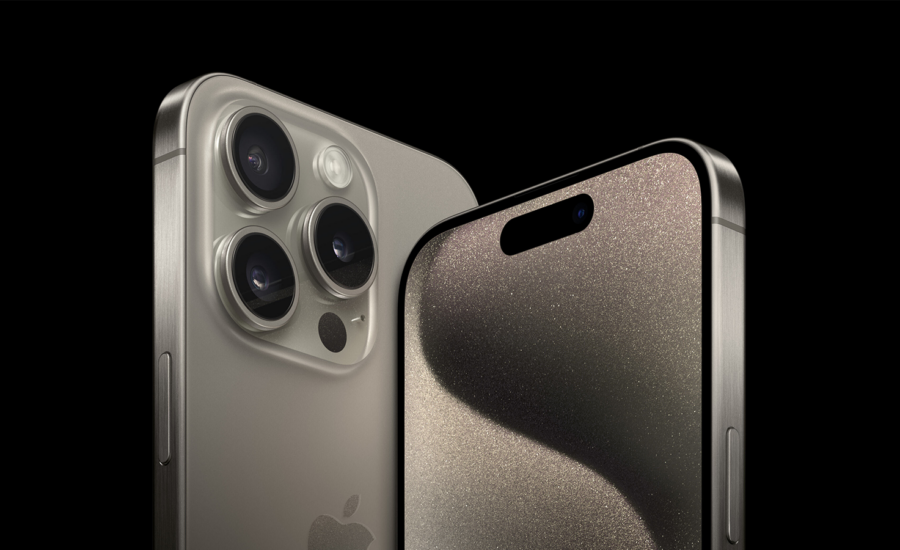Is the new iPhone 15 worth it in Canada?
Apple has launched a new iPhone series with several enticing features. Is it worth upgrading your phone to get the latest technology?
Advertisement
Apple has launched a new iPhone series with several enticing features. Is it worth upgrading your phone to get the latest technology?

Apple launched its shiny new iPhone 15, iPhone 15 Plus, iPhone 15 Pro and iPhone 15 Pro Max models on Sept. 12. A few highlights from the big reveal: The iPhone 15 Pro and iPhone 15 Pro Max are made with durable, lightweight “aerospace-grade titanium” rather than the usual steel, and they have a new “Action” button that will allow users to instantly record voice memos, switch on focus modes (like “Do Not Disturb”) and eventually translate speech in real time, Apple said in a press release on Tuesday. The new iPhone lineup also comes with camera upgrades like improved night mode and portrait mode features, and a telephoto camera on the iPhone 15 Pro Max. This iPhone launch also marks the end of lightning cables, as Apple moves to USB-C charging ports.
If you want an iPhone 15, brace yourself—these top-of-the-line phones come with sky-high prices:
How do you know if it’s worth the cost of upgrading from your current phone? Should you wait for iPhone 15 prices to come down (as they eventually will), buy an older model like the iPhone 14 instead, or take the plunge and get the latest technology ASAP?
The short answer is that it depends on your budget, preferences and other factors. Here’s what to consider before you buy the newest iPhone.
The iPhone 15 series will be available starting Sept. 22, but you can pre-order now. You have two options: buy your phone outright (from Apple, a cell phone provider or another retailer) or make monthly payments (typically over two years).
If you buy a phone directly from Apple and opt for monthly payments, you’ll pay interest at 7.99% over 24 months. For an iPhone 15, the monthly payment including interest would be $51.05, for a total of $1,225.35 over 24 months. For the priciest model, the iPhone 15 Pro Max, the monthly payment would be $79.09, for a total of $1,898.26 over 24 months. If you opt to upgrade the storage and/or add AppleCare+ coverage, your monthly cost will go up.
If you buy a phone through a cell service provider, you likely won’t pay interest (0% APR), but you will have to sign up for a mobile contract. You may also have to put down part of the phone cost upfront, depending on the provider. For example, Fido requires $690 down for the iPhone 15 (and more for the other models), while Rogers, Bell and Telus require no upfront payment for any of the iPhone 15 series phones.
Some of these cell phone carriers offer upfront discounts of a few hundred dollars if you agree to return the phone in two years. This may be a good option if you change phones every couple of years already.
For customers who plan to buy their phone outright, with no monthly mobile contract, Rogers recently launched its Equal Payment Plan—a cell phone financing plan with no interest charged as long as you make the payments on time.
To be eligible, you have to pay for the device using a Rogers Bank credit card (like the Rogers Mastercard) at a Rogers, Fido or Shaw branded store. You can choose from two payment plans: 36 months (three years) or 48 months (four years), and your payments will be up to 50% smaller than if you had a 24-month (two-year) payment plan. Note that this is not a discount. Your new phone will still cost the same, but you get more time to pay it back. You also have the option to pay off the debt in full any time.
The cost of a new device can be expensive, especially if you’re signing on to a payment plan that charges interest. And, of course, you’ll need to factor in the monthly cost of your mobile plan. This could add another $100 or so to your monthly bill—maybe more, depending on what features you choose.
Be honest with yourself—does buying a new phone make financial sense? “The prices for all four of these new iPhones are well over $1,000,” says Amber MacArthur, a Canadian tech expert, podcaster and author. “For a lot of people, that’s a pretty steep investment.”
For most people who have a previous version of the iPhone—anything in the past few years—chances are it’s good enough for now, says MacArthur. “For anyone who actually wants to spend the extra money and upgrade to the iPhone 15 [series], you would do so because you needed the capabilities of that new phone, perhaps for work—maybe you’re a professional blogger and you want to have better camera capabilities. If you’re making that purchase for work reasons or business reasons, it does make some sense.”
Another option is to trade in your old phone for a new one. Most major telecom companies, like Bell, Fido and Rogers, offer trade-in programs for certain types of devices (including iPhones). When you trade in your old phone, you can either reduce your monthly payments on a new device or get store credit for buying new devices in the future. For example, with Bell’s trade-in program, you can get a credit worth up to $700 when you trade in your device. The trade-in value greatly depends on the type of model and its value, however.
You can buy previous versions of the iPhone that have been refurbished, meaning they have been repaired so they are in like-new condition, MacArthur says.
“A refurbished iPhone can be a really great investment in terms of saving money, but still actually getting an iPhone that is a little bit newer than the model that you currently have,” MacArthur says. It can be hard to assess the quality of a second-hand device, so she recommends buying from large, reputable online retailers.
You could look for refurbished phones on sites like Apple or Best Buy, for example, rather than purchasing from a peer-to-peer marketplace like Craigslist, Facebook Marketplace or eBay. Buying from a company will also help you avoid getting scammed.

Maybe you’re considering a new iPhone because yours is damaged or not working properly. You might be able to get it repaired—or even fix it yourself.
For years, an ongoing gripe among many iPhone (and Mac) users was that they couldn’t fix their own devices, also known as the “right to repair.” A couple of years ago, Apple started giving users access to manuals, parts and tools for self-service repair of certain devices. More recently, in August, the company announced its support for the Right to Repair Act in California, although it has not yet been officially rolled out. “This could mean that in the months ahead, you could order parts and replace them on your own, and not necessarily have to go to the Apple Store to get a new battery, for example,” MacArthur says.
The self-service repair option is not yet available in Canada (Apple says it will expand service to more countries), but change is coming on another front: As part of new affordability measures in its 2023 budget, the federal government announced that it will introduce “a targeted framework for the right to repair home appliances and electronics” in 2024—so stay tuned.
Although the new features of the latest tech can be tempting, you don’t have to shell out your hard-earned money to get a decent mobile phone. “When you’re going out to buy a new iPhone, you want to do so when you absolutely need it. I think for a lot of people, they don’t necessarily need a new iPhone every single year,” MacArthur says.
Try to weigh the decision based on need. If you need it for work or your phone isn’t functioning properly and can’t be fixed, then it might be worth looking for a new one—brand-new or just new to you.
Share this article Share on Facebook Share on Twitter Share on Linkedin Share on Reddit Share on Email